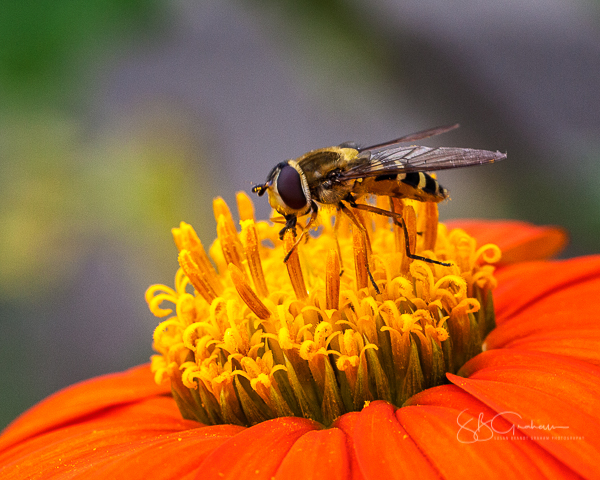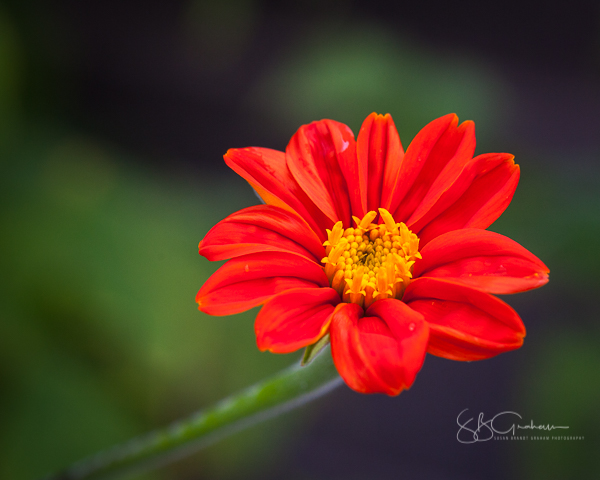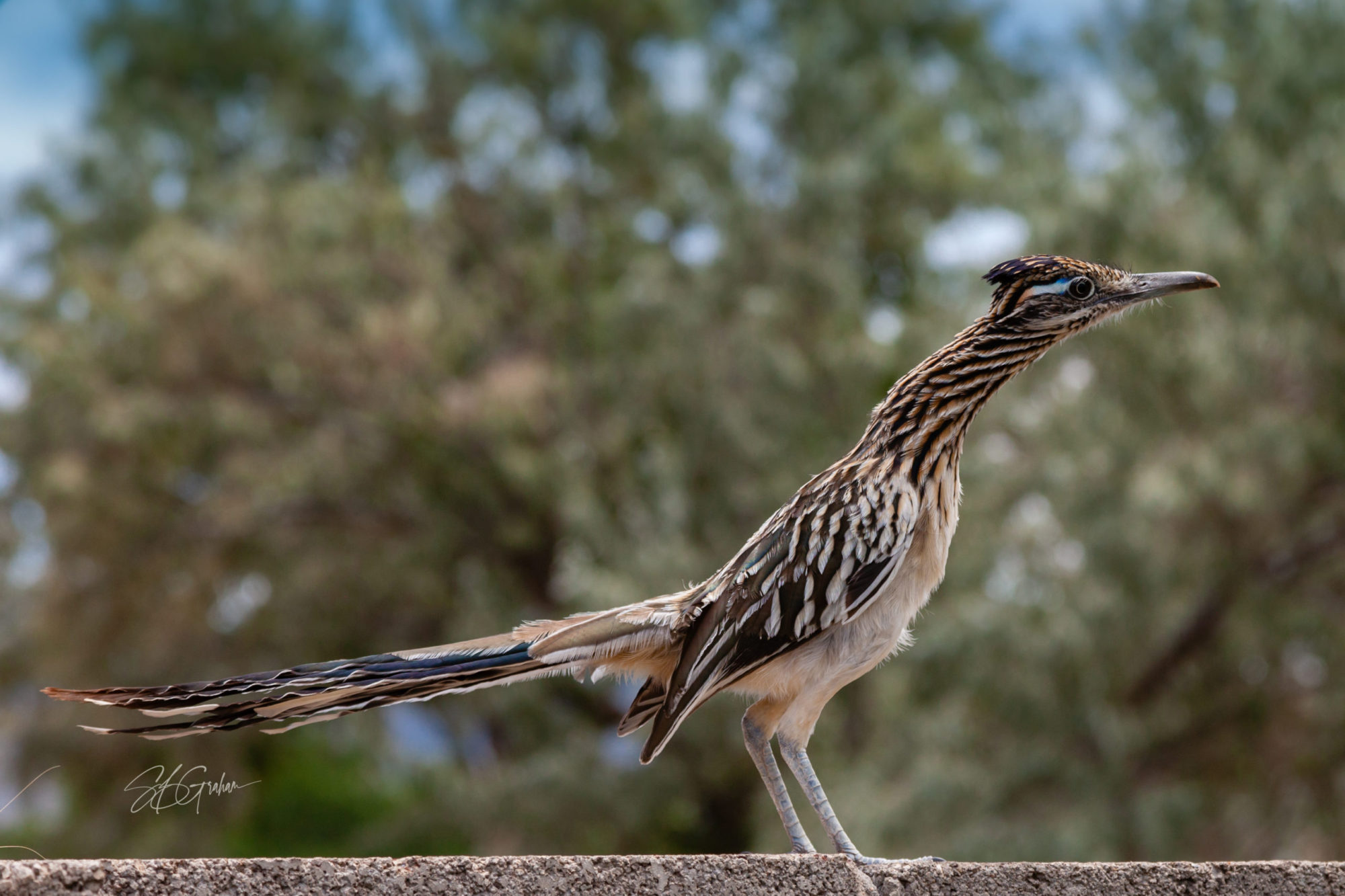Pollen Wasp: No, Just a Hoverfly
Pollen wasp is something I had not known about until a few days ago. Yet, pollinators are something we talk about frequently, because of their vital importance to crops and virtually all plants on earth. I, and neighbors, try to include flowers that will attract pollinators. While we tend to think about the beauty of the the flowers, we talk less about the beauty of our pollinating friends. Yet, up close and personal, they can be beautiful and interesting.

Regular readers and friends know that I have grown a variety of sunflowers for years. Years ago in Arizona I grew Tithonia rotundiflora (“Mexican sunflower”). It is in the same Family, Asteraceae, as our typical sunflowers. However, the genus is Tithonia rather than Helianthus. When I saw seeds in the grocery store, I thought maybe it would be fun here. So, I decided to try it. It is a fabulous plant for Albuquerque!

The other day I was out photographing the flowers. I saw a wasp on the tithonia. While I considered it a yellow jacket, its behavior seemed odd for a wasp. It almost seemed to be making love to the flower. So I kept photographing it, hoping I could understand what was going on. When I looked at the images on the computer, I saw what appeared to be a very odd mouth part. As it turns out, it is a very specialized mouth part, a “suctorial proboscis.” (These wasps – this isn’t one) are solitary vegetarians, sucking nectar and pollen from flower tubules.) As it turns out, what I took to be a wasp is, in reality, a hoverfly with also very specialized suctorial proboscis. Example here: hoverfly
The joy of photography: seeing and learning new and different things, without even trying! Last week I did not know what a pollen wasp was. Now I know what it is, and this is not one. It is a hoverfly. Now I know they also have these very specialized suctorial probosci. This week I am glad this one chose to visit my garden and allowed me to photograph it! And thanks to Anita Storino for the updated information.



